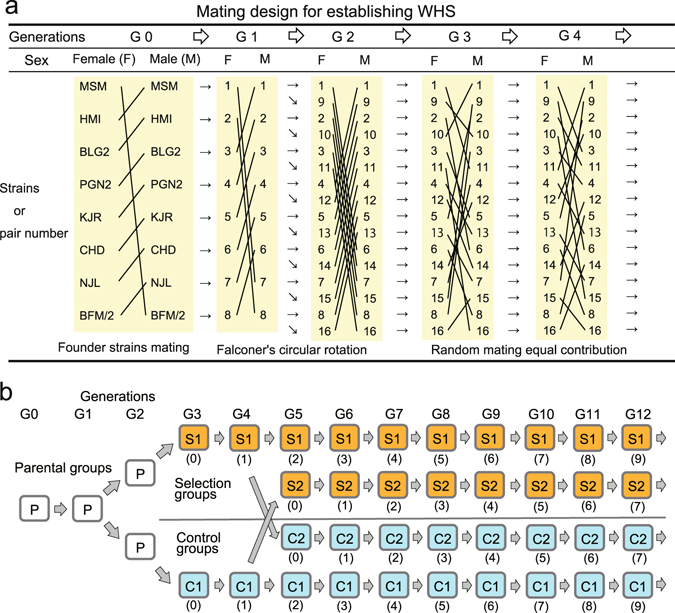Figure 2.

Mating design used to establish the wild-derived heterogeneous stock (WHS) and for selective breeding. (a) Mating scheme for the early stage of establishing the WHS. Lines between founder strains and numbers indicate matings to produce progeny. The cage numbers for the next generations are given for the female lineage, so both male and female progeny were given the same cage numbers as their mothers, except for in generation G1, in which the number for each female founder strain is given. At generation zero (G0), a male mouse of one of the eight wild strains was mated with a female of another wild strain to produce G1 mice following the circular rotation rule (see Methods). For example, a female from the MSM strain (no.1) was mated with a male from the BFM/2 strain (no. 8). A male G1 mouse from one pair was mated with a female G1 from another pair following the circular rotation rule, so a female produced by no. 1 was mated with a male produced by no. 7, a female produced by no. 2 was mated with a male produced by no. 8, etc. At the G2 generation, the number of pairs was expanded from eight to 16, and the mice were mated again following the rotation rule. From the G3 generation, mating pairs were made following the random mating rule while avoiding intercrossing. (b) The process used to establish the two selection groups S1 and S2 and the two control groups C1 and C2. Each number in parentheses indicates the number of selections (see Methods). The orange and blue boxes indicate selection and control groups, respectively.
